We bring to your attention the top 10 aquarium snails, which you can purchase or receive as a gift (sometimes unexpected).
Snail ampullary
The most common aquarium snail. A distinctive feature of this mollusk is its large size and bright color of the shell – usually deep yellow. Ampularia has both gill and pulmonary respiration, so it needs to regularly float to the surface in order to inhale a portion of atmospheric air.
For keeping ampullary it is recommended to have an aquarium with a volume of at least 10 liters per individual. Any calm types of fish are suitable as neighbors.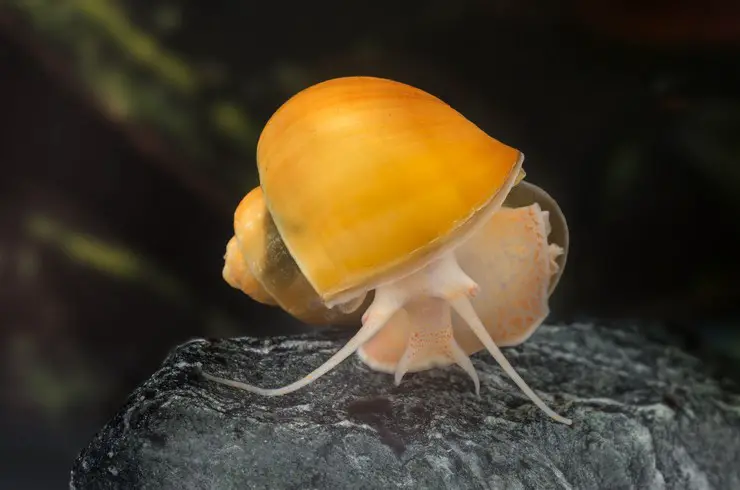
Ampularia is dioecious snails, which also leave noticeable clutches of eggs, so uncontrolled reproduction is excluded.
There is a common myth that ampullary are capable of attacking other aquatic life. This, of course, does not correspond to reality, because a slow snail is unlikely to be able to catch up with a fish swimming by. It is worth considering that these mollusks, however, can damage live plants.
Snail coil
The coils are a wide group of snails with a characteristic shell resembling a twisted ram’s horn. It is represented by small species, the maximum size of which does not exceed 3.5 cm. Appear in aquariums mainly by accident by adding it with plants or decorations from another aquarium. Of the interesting behavioral features, the ability to swim on the surface of the aquarium with a sink down is noted.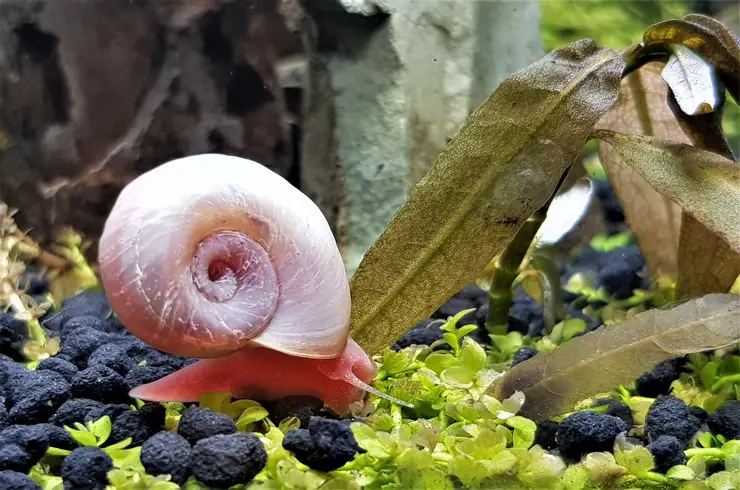
The attitude of aquarists towards them is ambiguous. Someone appreciates the reels for their attractive appearance and help in eating the remains of food, as well as algae in the aquarium. Others try to get rid of the coils before the mollusks have multiplied too much, and they do it quickly enough. Hobbyists who keep fish such as tetrapods grow coils as food for them.
It can be kept in aquariums of any size, with peaceful species of fish and shrimp. Living plants are not damaged.
Snail Mariza
Marizes are herbivorous gastropods with a large and beautiful shell, usually striped in color. They are close relatives of ampullary. They originate from the reservoirs of South America.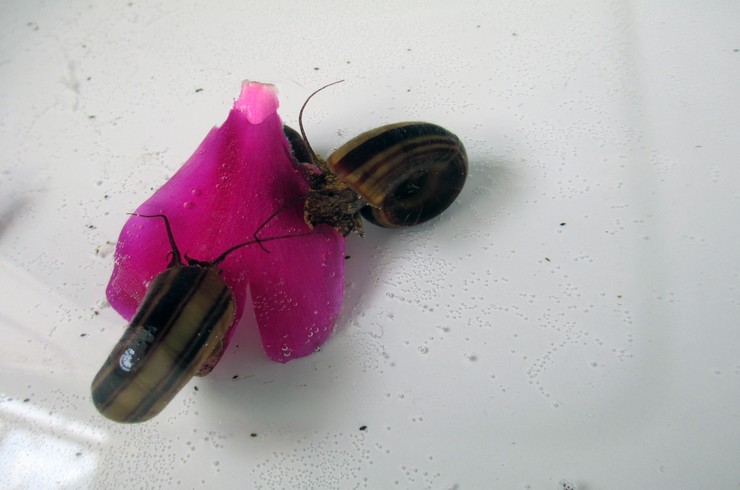
For maintenance, you need an aquarium of 20 liters or more with good filtration and aeration. Poorly tolerate cold water. They are able to breathe with the help of gills and lungs, therefore it is necessary to provide unhindered access to the water surface.
They get along well with fish with a calm temperament. It is not recommended to put them in herbal aquariums – snails can damage the leaves of living plants.
Melania snail
Melania is a large group of snails from the Tiara family. Miniature mollusks, the size of adults does not exceed 3.5 cm. The shell is cone-shaped with 3-5 whorls, usually brown.
Rarely are especially started by aquarists, most often they come with plants transplanted from another aquarium. They spend most of their time buried in the ground. They received sad fame because of the unprecedented rates of reproduction. Under suitable conditions (no natural enemies, regular overfeeding of fish), they are able to unusually quickly increase their numbers many times, up to the point that the entire soil becomes “alive”.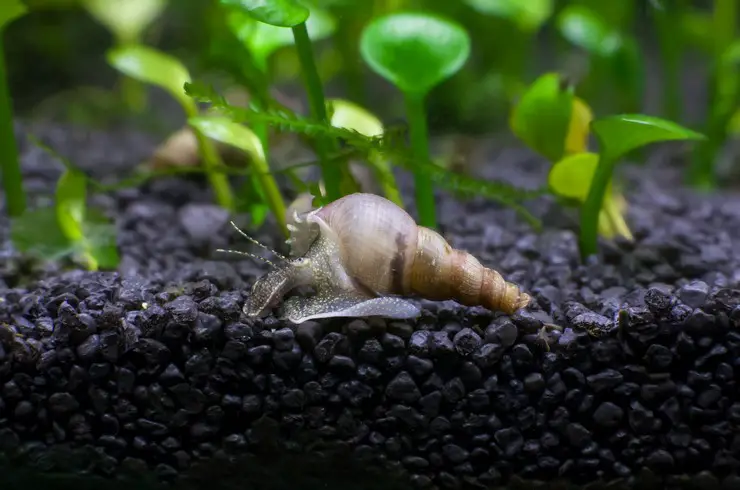
It is very difficult to deal with such an invasion, often all attempts end with a complete restart of the aquarium. For some aquarists, the proximity to these snails does not cause discomfort: they like how the snails “turn over” the soil, preventing it from souring.
Melania’s are extremely unpretentious mollusks that can live in almost any aquarium.
Snail neritina
Aquarists fell in love with neritina, first of all, for the unusually interesting color of the shell with saturated colors, stripes, or spots. They also provide all possible assistance in cleaning the aquarium, feeding on algae. And they eat neritina algae extremely delicately, without damaging living plants.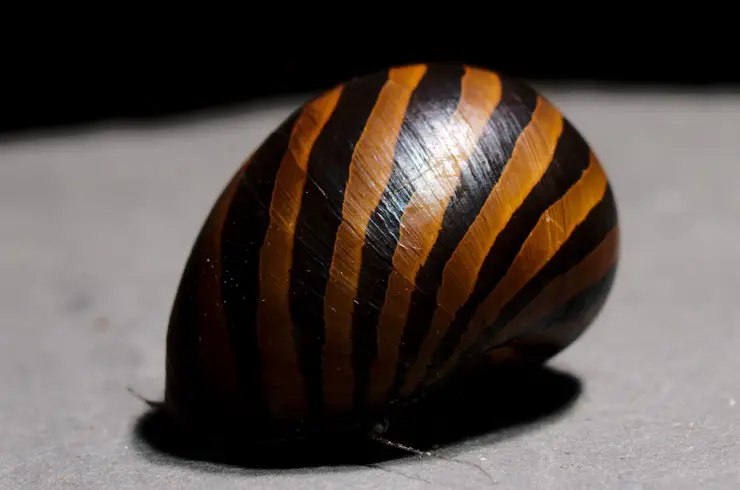
Keeping snails is easy. The minimum recommended aquarium volume for a group of clams is 8 liters. Neretina is sensitive to high concentrations of nitrogenous compounds, as well as to a sharp change in water parameters during transplantation.
You can keep snails only with peaceful fish species. The breeding process is quite complicated, as the neritina larva must develop in saltwater.
Horned snail
The snails got their name for the characteristic thorns on the shell, which in nature serve as protection against attacks by predators. Due to these outgrowths and bright colors of shells, mollusks look very impressive in home aquariums. Like other members of the Neretina family, horned snails help destroy algae in the aquarium without damaging the delicate leaves of aquatic plants. The miniature size of these invertebrates will allow them to crawl into even the most inaccessible places.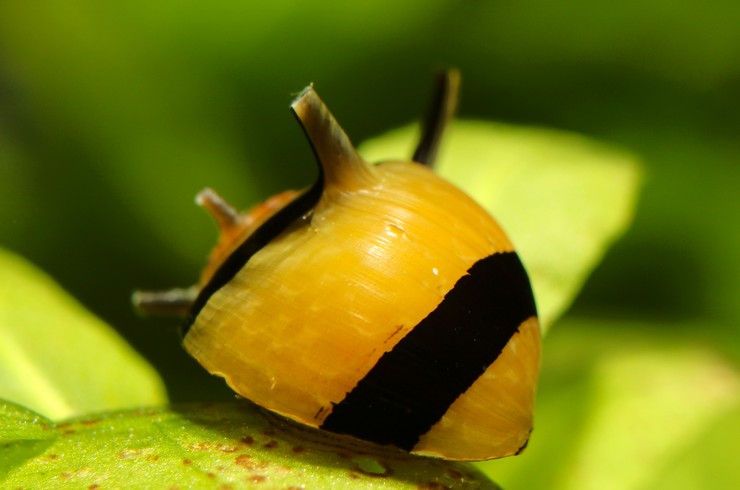
They contain horned snails in groups in aquariums from 10 liters. They love clean water. They get along well with peaceful ornamental fish.
Reproduction is difficult because young snails require saltwater to develop. Care must be taken when holding the snail in the hand, it is very easy to prickle the pointed thorns.
Tylomelania snail
Tilomelania is a snail that lives on the island of Sulawesi. This isolated area is famous for endemic organisms and special water parameters in rivers and lakes.
Tylomelanias are very large mollusks, some species can grow up to 12 cm. They have an attractive dark shell and an unusual mouth opening, which is elongated in the form of a trunk.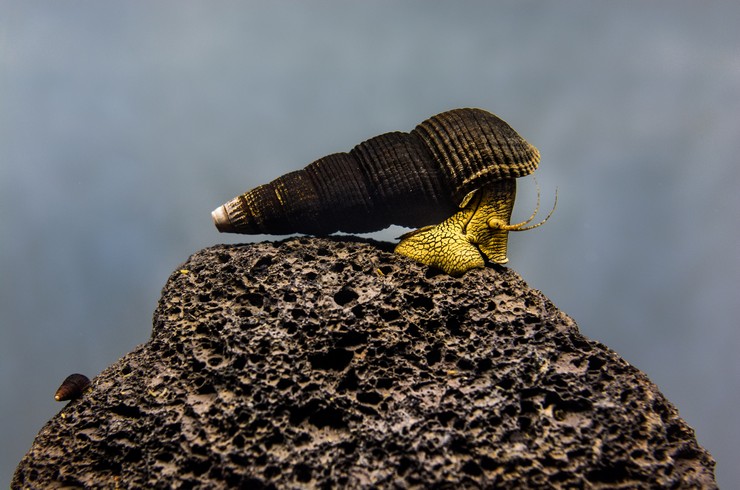
Among the peculiarities of tylomelanias, the process of getting to know the inhabitants when moving into a new aquarium should be noted: for this, the snail must touch everyone. The appetite of these mollusks is also surprising. They no longer do only with pasture and require regular and abundant feeding.
Snail fiza
Fies is another travel snail that usually spawns randomly in the aquarium. The maximum body size is no more than 2 cm. They have a fairly beautiful shell. Undemanding to the conditions of detention.
They do not have gill breathing, so a regular ascent to the water surface is essential. They perform this operation in an interesting way – they leave mucous cords on the glass, along which they then quickly rise upward, like in an elevator.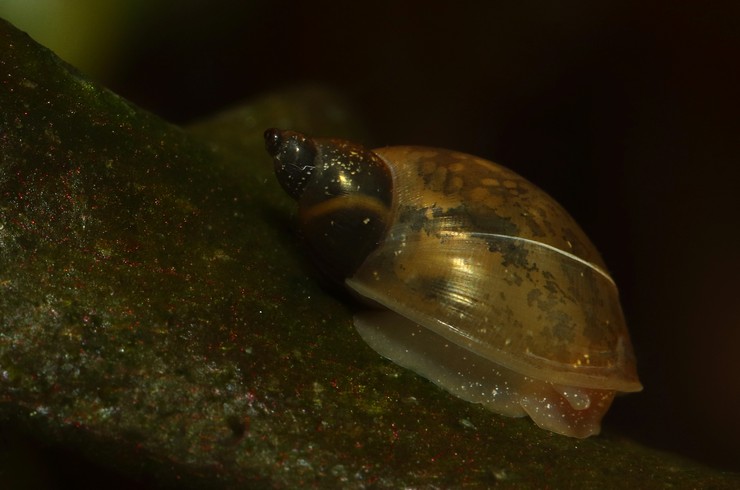
The content is not too difficult. Compatible with peaceful tropical fish. The basis of the diet is algae, but snails do not spare plants, so it is better not to start them in herbalists. May damage the shell of fish eggs. Fiza is hermaphrodites, therefore they are distinguished by high rates of reproduction, which is also a serious disadvantage of these mollusks for lovers.
Helena snail
Helena is one of the most unusual aquarium snails, and its peculiarity is that, unlike most of its relatives who feed on plants or detritus, this mollusk is a real predator that eats other snails. She does this with the help of a long proboscis, with which she penetrates the shell of a neighboring snail and, in the literal sense, sucks out the mollusk in it. Helen’s targets are primarily snails of a similar size; they usually do not attack large gastropods.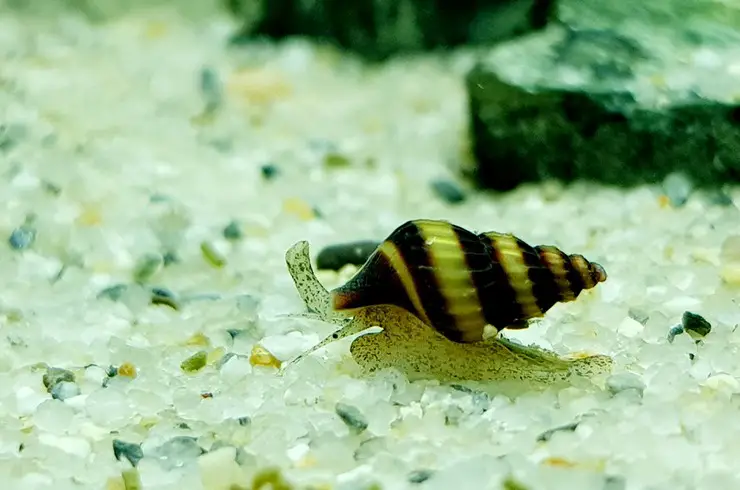
Helens are excellent helpers for the aquarist when it comes to dealing with mollusks that reproduce extremely actively (Melania, coils, etc.).
Helen can be kept even in small aquariums. They are indifferent to plants; in the absence of snails, they feed on bottom food for fish.
They are dioecious, reproduce easily, but not quickly.
Devil’s thorn snail
The Devil’s Thorn is an attractive snail with a long, pointed shell, predominantly deep black. A brackish species that nonetheless do well in freshwater home aquariums. The maximum body size is 8 cm.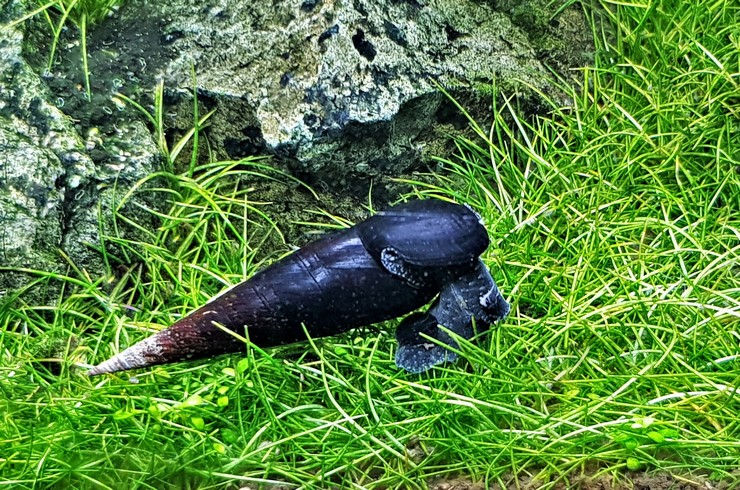
For maintenance, you will need an aquarium of 10 liters per individual. Get along with calm species of fish and shrimp. They are not interested in living plants, but sometimes there are ways to eat up mosses.
The process of obtaining offspring is difficult since the larva needs to develop in saltwater.
